Abstract
If a population (species) consists of n haploid lines (subpopulations) which reproduce asexually and each of which is subject to random extinction and subsequent replacement, it is shown that, at equilibrium in which mutational production of new alleles and their random extinction balance each other, the genetic diversity (1 minus the sum of squares of allelic frequencies) is given by 2Nev/(1 + 2Nev), where [Formula: see text] in which Ñ is the harmonic mean of the population size per line, n is the number of lines (assumed to be large), λ is the rate of line extinction, and v is the mutation rate (assuming the infinite neutral allele model). In a diploid population (species) consisting of n colonies, if migration takes place between colonies at the rate m (the island model) in addition to extinction and recolonization of colonies, it is shown that effective population size is [Formula: see text] If the rate of colony extinction (λ) is much larger than the migration rate of individuals, the effective population size is greatly reduced compared with the case in which no colony extinctions occur (in which case Ne = nÑ). The stepping-stone type of recolonization scheme is also considered. Bearing of these results on the interpretation of the level of genetic variability at the enzyme level observed in natural populations is discussed from the standpoint of the neutral mutation-random drift hypothesis.
Keywords: population genetics, protein polymorphism, periodic selection, neutral mutation-random drift hypothesis
Full text
PDF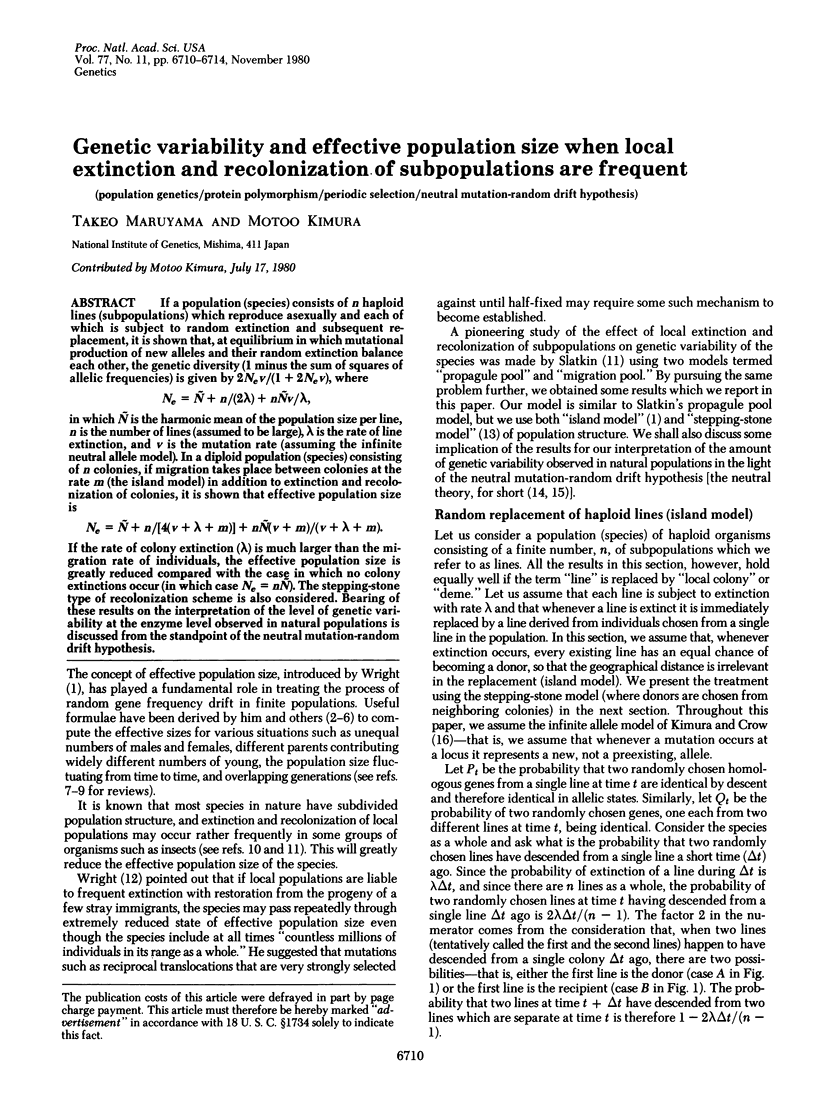
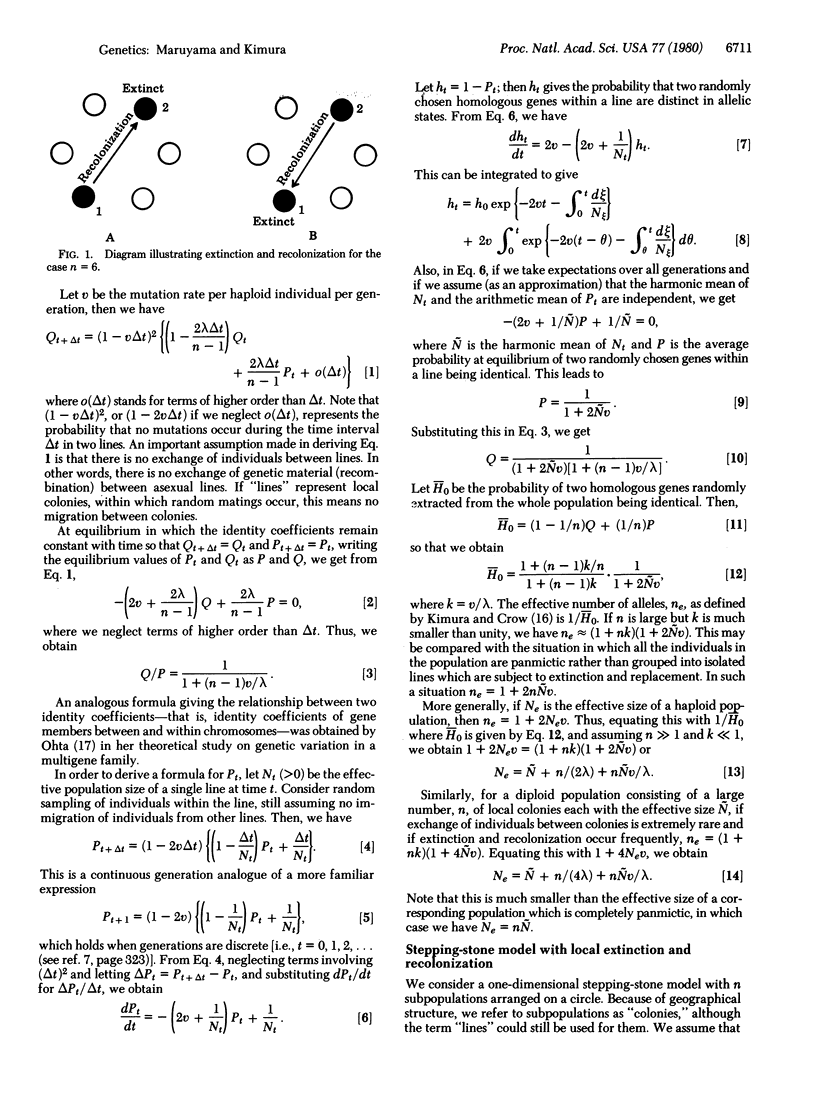
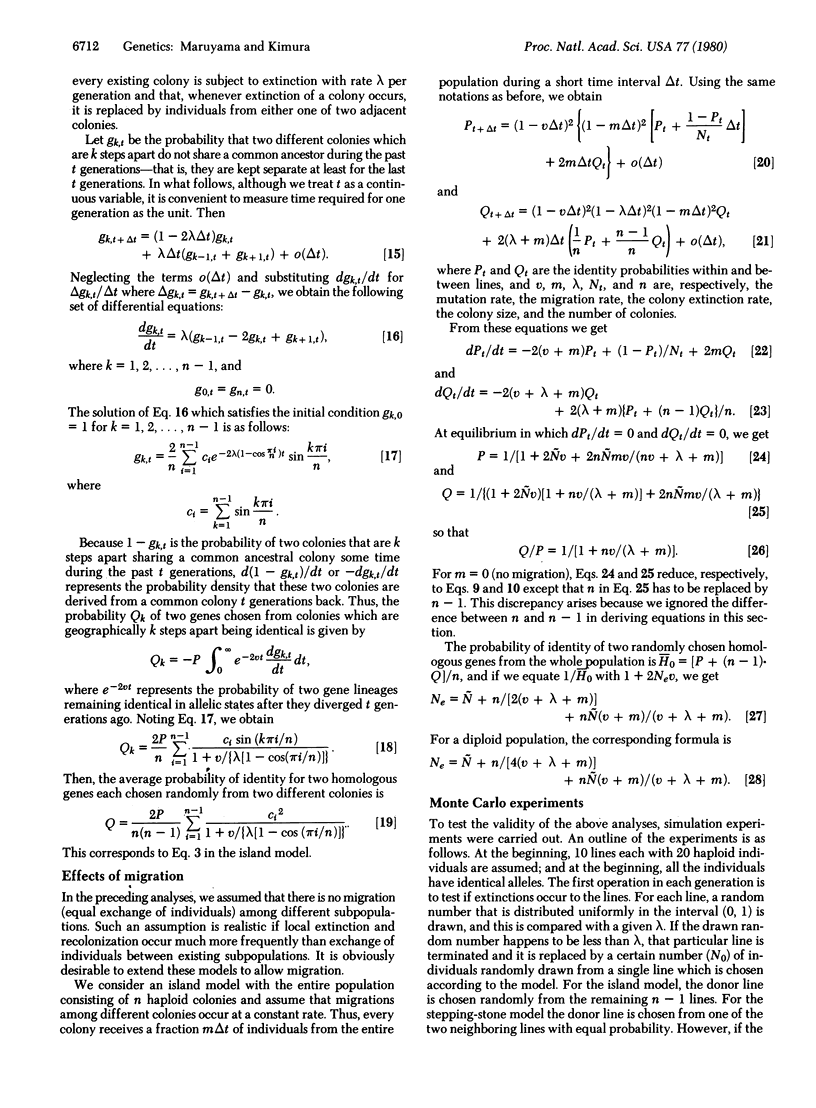
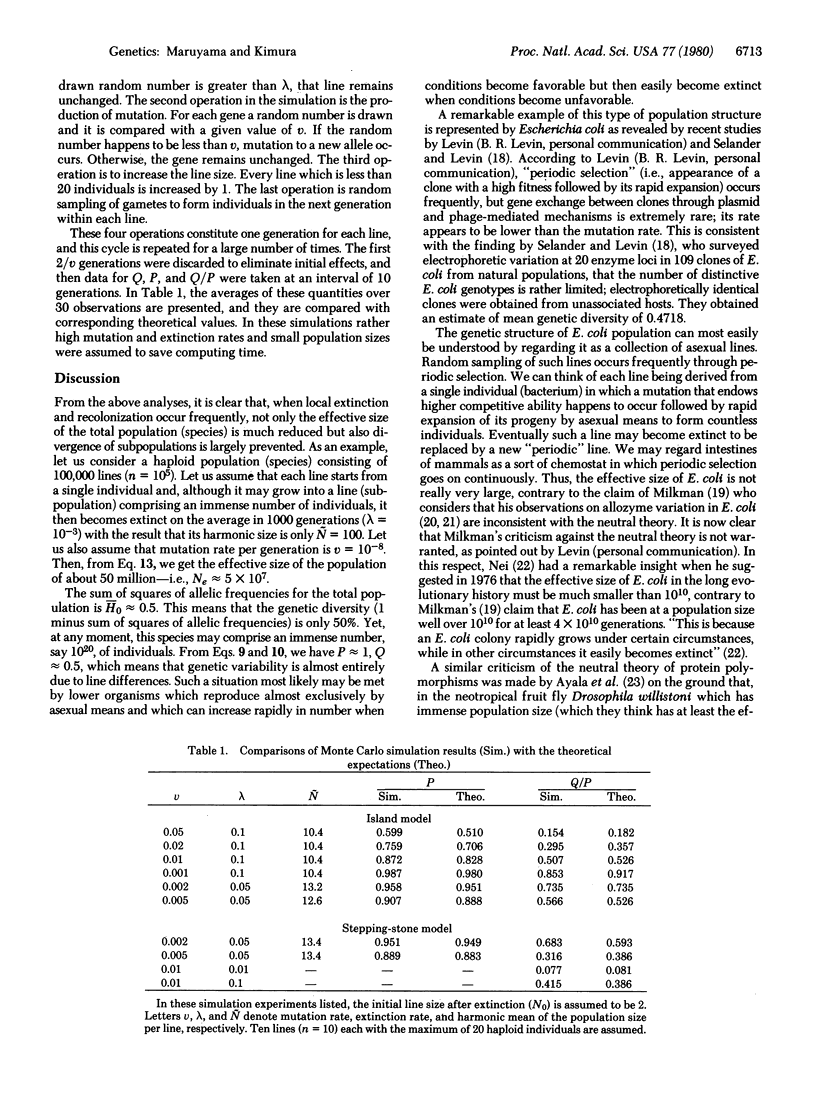
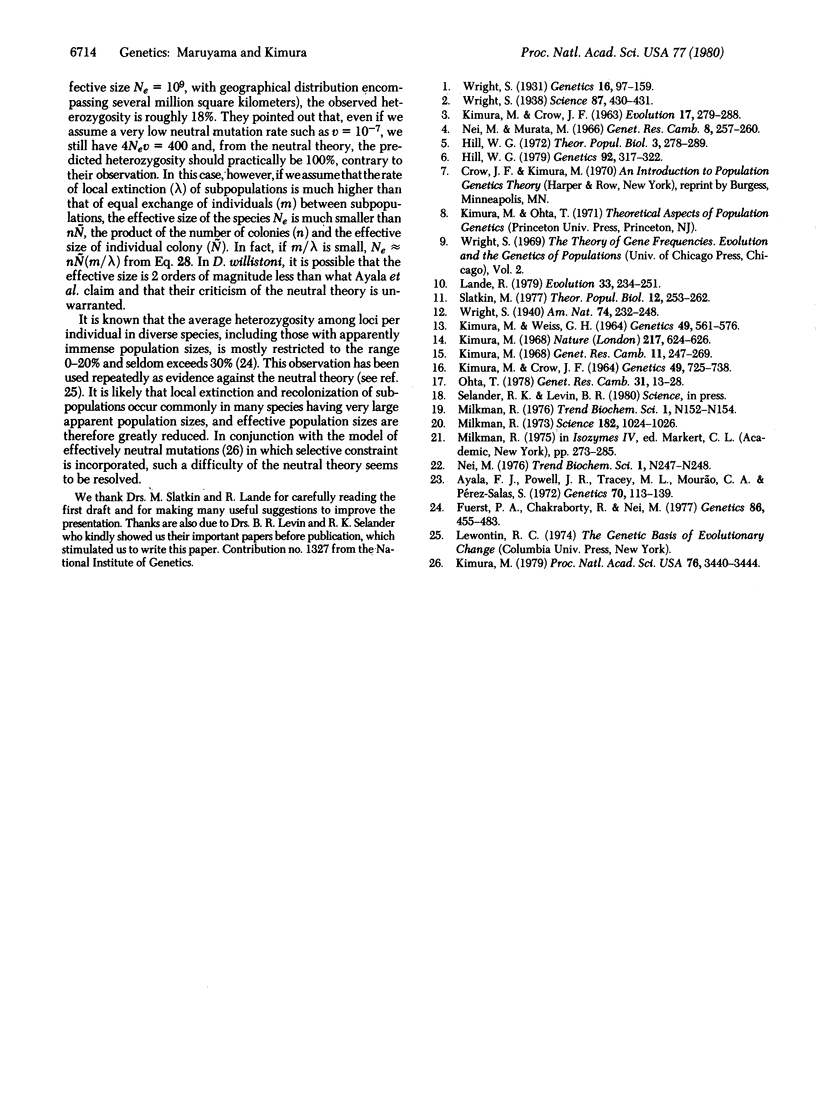
Selected References
These references are in PubMed. This may not be the complete list of references from this article.
- Ayala F. J., Powell J. R., Tracey M. L., Mourão C. A., Pérez-Salas S. Enzyme variability in the Drosophila willistoni group. IV. Genic variation in natural populations of Drosophila willistoni. Genetics. 1972 Jan;70(1):113–139. doi: 10.1093/genetics/70.1.113. [DOI] [PMC free article] [PubMed] [Google Scholar]
- Fuerst P. A., Chakraborty R., Nei M. Statistical studies on protein polymorphism in natural populations. I. Distribution of single locus heterozygosity. Genetics. 1977 Jun;86(2 Pt 1):455–483. [PMC free article] [PubMed] [Google Scholar]
- Hill W. G. A note on effective population size with overlapping generations. Genetics. 1979 May;92(1):317–322. doi: 10.1093/genetics/92.1.317. [DOI] [PMC free article] [PubMed] [Google Scholar]
- Hill W. G. Effective size of populations with overlapping generations. Theor Popul Biol. 1972 Sep;3(3):278–289. doi: 10.1016/0040-5809(72)90004-4. [DOI] [PubMed] [Google Scholar]
- KIMURA M., CROW J. F. THE NUMBER OF ALLELES THAT CAN BE MAINTAINED IN A FINITE POPULATION. Genetics. 1964 Apr;49:725–738. doi: 10.1093/genetics/49.4.725. [DOI] [PMC free article] [PubMed] [Google Scholar]
- Kimura M. Evolutionary rate at the molecular level. Nature. 1968 Feb 17;217(5129):624–626. doi: 10.1038/217624a0. [DOI] [PubMed] [Google Scholar]
- Kimura M. Model of effectively neutral mutations in which selective constraint is incorporated. Proc Natl Acad Sci U S A. 1979 Jul;76(7):3440–3444. doi: 10.1073/pnas.76.7.3440. [DOI] [PMC free article] [PubMed] [Google Scholar]
- Kimura M, Weiss G H. The Stepping Stone Model of Population Structure and the Decrease of Genetic Correlation with Distance. Genetics. 1964 Apr;49(4):561–576. doi: 10.1093/genetics/49.4.561. [DOI] [PMC free article] [PubMed] [Google Scholar]
- Milkman R. Electrophoretic variation in Escherichia coli from natural sources. Science. 1973 Dec 7;182(4116):1024–1026. doi: 10.1126/science.182.4116.1024. [DOI] [PubMed] [Google Scholar]
- Nei M., Murata M. Effective population size when fertility is inherited. Genet Res. 1966 Oct;8(2):257–260. doi: 10.1017/s0016672300010119. [DOI] [PubMed] [Google Scholar]
- Slatkin M. Gene flow and genetic drift in a species subject to frequent local extinctions. Theor Popul Biol. 1977 Dec;12(3):253–262. doi: 10.1016/0040-5809(77)90045-4. [DOI] [PubMed] [Google Scholar]
- Wright S. Evolution in Mendelian Populations. Genetics. 1931 Mar;16(2):97–159. doi: 10.1093/genetics/16.2.97. [DOI] [PMC free article] [PubMed] [Google Scholar]


